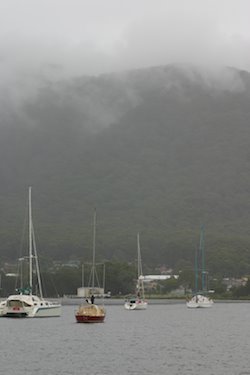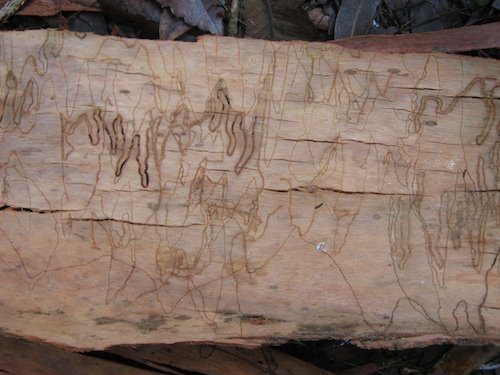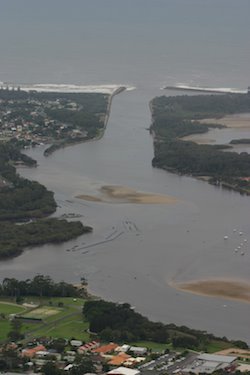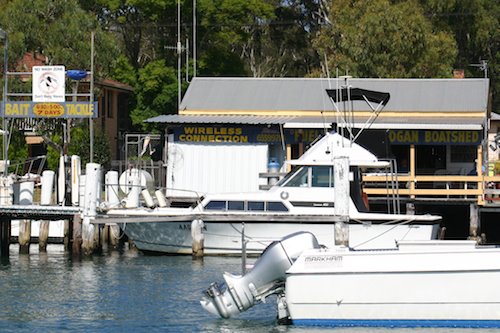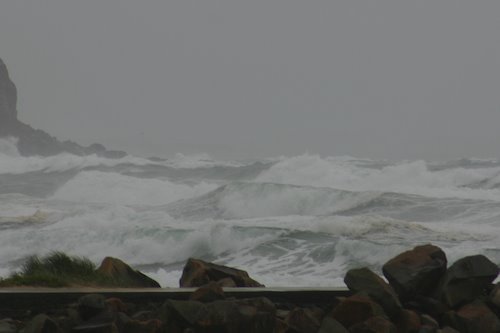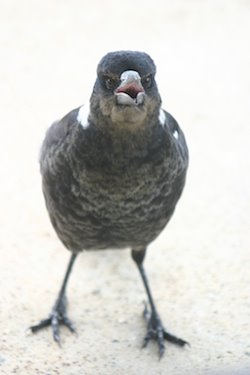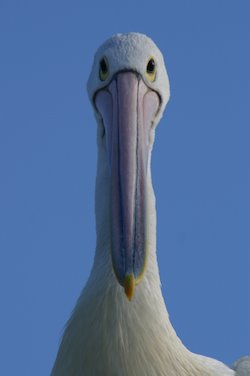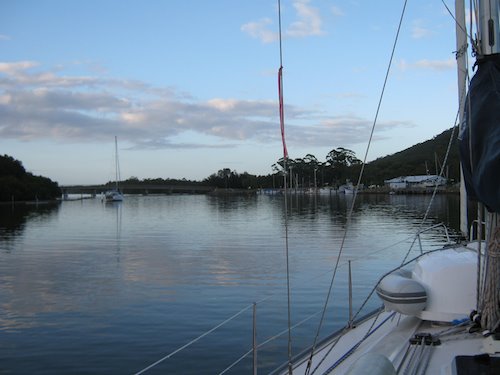At last, on Monday morning, the post that we had been waiting for arrived; a new bilge pump for the toilet and our set of digital charts from the Hydrographic Survey. We intended to leave Camden Haven on Tuesday’s dawn tide, but while checking the weather on Monday afternoon we found that Tuesday’s southerly change was going to be associated with gale-force winds. We decided to wait one more day and then follow the change up in the more well-mannered southerlies forecast for Wednesday. Since we’d already paid off and said our goodbyes at Dunbogan Marina, we went alongside the free jetty at the RSL instead.
I needed to pop into town to pick up some hose clamps for my ongoing toilet reinstallation, and Bronwyn wanted to pick up some food and medical supplies, so it was fairly inevitable that we ended up having a Guinness or two at the Laurieton Hotel. Two beers turned into eighteen (we know because the cash register was broken and the barmaid wrote them down on a post-it note) and very few of the urgent tasks were remembered that evening. We didn’t exactly make Wednesday’s dawn tide either, but we did end up being dragged down the channel in the overrun and spat out to sea before we were really ready.
In a previous blog, I commented on the tendency of our main halyard to wrap itself around everything when we try to hoist the mainsail in the slop at sea. David emailed us a suggestion, and we amended it to suit our boat and gave it a go; before leaving harbour, we attached the main halyard to the sail and then lay a length of it halfway back along the boom, tying it off there with a piece of rope (actually I achieved this balancing on the fore-deck while Bronwyn fought the tidal rip along the channel). When we got to sea, I just whipped away the rope along with the four normal sail ties. Bronwyn started the hoist from the helm, and by the time I’d nipped back to the cockpit I could take over and finish the job while Bronwyn concentrated on keeping us headed into wind. It worked a treat. Thanks, David.
I had previously decided that today was the day that I would wean myself off seasickness tablets. After all, we have to gain our sea-legs at some point. Maybe it was the Guinness, but the immediate result was that I spent most of the morning leaning over the rail and feeding the fishes. However, by ten o’clock I was feeling much more chipper, and launched the tow-generator. I reckoned that we would be needing the electricity, because we’d been stationary for a week and we now had to power one of the computers so that we could use our shiny new digital charts.
The tow line for the generator was a little kinked from our test run outside Sydney harbour, and we’d certainly never tried it at the speeds of which Pindimara was now capable, so we were a little surprised when the generator set up a noticeable but not objectionable hum. We were happy to note that at seven knots of boat speed we were getting seven amps of power, and were even more delighted when the dolphins seemed to find the spinning torpedo greatly fascinating, and spent almost half an hour playing with it.
By early afternoon, it was clear that our bold decision to head straight for the Clarence River some 160 miles away was being vetoed by the wretched East Australian Current, which was robbing us of a whole two knots however we tried to avoid it. As light fell, we were both feeling decidedly queasy and decided to call it a day at Hat Head, where we experienced our first ever ‘roadstead anchorage’, which is a grand name for hiding behind a big rock and dropping your anchor in the sea.
In retrospect, we could have dropped the pick a little farther from the beach. We arrived at high tide and the night started comfortably enough, but as the tide dropped the beach swells began to form to seaward of our position, which made the boat roll unpleasantly and had me up and down every couple of hours checking the anchor (and on one occasion resetting the snubber, which had come undone with a disconcertingly loud “bang”). Still, once the tide had come back in, we slept well enough.
